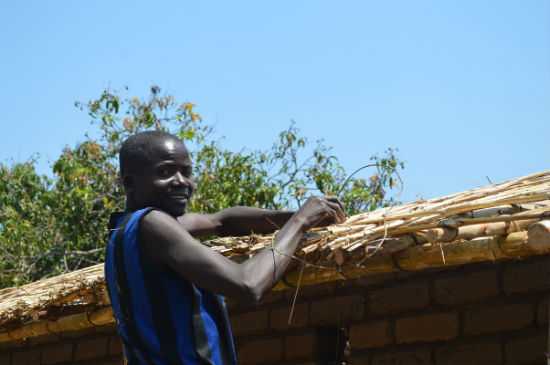

It begins with the greetings -“Muli bwanji” (How are you?). The response is always the same – “Zikomo” (Fine thank you.)
My guide and I, having seen this homestead with its interesting decorations of vibrant wall paintings, have decided this would be a great example of African vernacular architecture to document. A row of shrubs defined the dusty ground as a yard complete with a mango tree in the front. A noticeable feature was how clean the homestead was kept, swept clean of sticks and leaves every morning. After the initial greeting, our guide explained in Chewa why we were here and asked permission to take pictures.
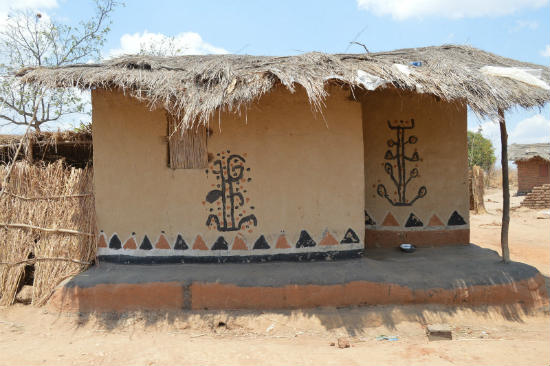
I traveled to Malawi last year to document the vernacular architecture. This is architecture that is based on local needs and reflects local traditions. I had been to Malawi 20 years earlier as a Peace Corps volunteer serving in neighboring Zambia. It was in a tiny village, living in a mud hut that I developed my passion for African vernacular architecture. Later, while teaching architecture at the CopperBelt University in Kitwe, Zambia, I obtained a grant to document the vernacular architecture in Zambia.
I wanted to return to Africa to conduct more research because the lack of information available online regarding African vernacular architecture concerned me. I chose Malawi because I had been there before. Malawi is a small country which could be traveled in less than a month and the people are incredibly friendly. That is the reason Malawi is referred to as “the warm heart of Africa.”
Vernacular architecture in Malawi is like most countries in Africa — it is disappearing, being abandoned in favor of western materials and techniques. And that is unfortunate, since vernacular structures are a part of a country’s culture as much as language, music or food.
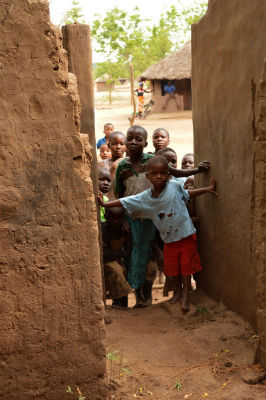
There is only a small window in which to document Malawi vernacular architecture since construction is tied to the seasons and the land. Construction takes place only after the rainy season is finished. The rains end, the land dries out and thatch is ready to be cut and dried. Home owners make clay bricks with a wooden mold, either to be sun-dried or burnt in a kiln. Roof frames are built, constructed of wood from a tree or from bamboo. Bamboo stalks and thatch are woven together to create a basket weaving design, which is then used to build granaries and other structures. That was the seasonal schedule I was working around.
Malawi is a very linear country, it stretches from north to south with Lake Malawi hugging most of the eastern side. For my general research, the country was divided into three areas; North, Central and South Malawi. My schedule allowed for one week in each area. The south is hilly and densely populated; the architecture is mainly constructed of burnt bricks. The central area is fertile land with well-populated plains. Many areas had homestead structures constructed of rammed-earth. The northern area of Malawi is mountainous and sparsely populated.
Malawi has two major cities; Lilongwe, the capital, is centrally located, while Blayntyre is in the southern part of the country. Lilongwe is bigger and much more spread-out than Blayntyre which is more concentrated. I flew into Blayntyre and through contacts I arranged to stay with a VSO volunteer. My number one goal was to find a vehicle and driver to hire for three weeks. I had no set schedule; we would drive from one city to the next, making sure we arrived by nightfall. What we needed was basic; a room to sleep in, food for dinner, the ability to fill up the tank and access to an ATM.
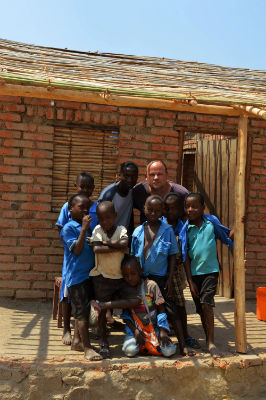
The plan for the research was very simple, we would drive down roads both paved and not. When I noticed something to document — decorations on a home, walls under construction — we would turn around, park the truck and walk into the homestead, to the front door of the main home. We would exchange greetings — which are a big part of Malawian culture — and my guide would explain the project in Chewa, answering any questions the home owner might have. Eventually, we would ask permission to photograph.
I was surprised at the reactions of the home owners about our research. They were primarily proud, even shocked that we wanted to take pictures of their homes. I was overwhelmed by the friendliness, openness and hospitality of the Malawian people.
The most unique thing I saw on the entire trip — and there were many — was a pedestrian bridge spanning the South Rukuru River in the village of Kandewe in northern Malawi. This bridge has been around since 1904 and is still in use although repairs are done as needed. There is no concrete or steel, composed instead of wood branches, bamboo and vines. It looked like something from the movie set of “Indiana Jones” with holes as big as my sandal. On my first attempt to cross, I walked about 15 feet and froze. After a short break to regain my confidence, I managed to make it to the other side and back again.
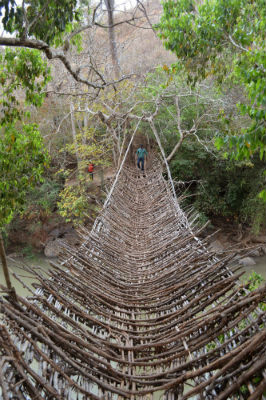
The research, being loose in structure, did not go as smoothly as one would like. Incidents that at the time were stressful and seemed like a disaster are now just part of a good story. For example, there was the time that we were driving up a mountain and the road marked on the map was actually more of a suggestion. Or the times we were desperate enough to try to purchase black market petrol. And then there was the time my driver was pulled over and ordered to go down to the local police station.
My fondest memory will be of the people in Malawi. We stopped at more than 300 villages and homesteads. The one-on-one interactions, plus the crowds of small children who followed us with curiosity, will forever be on my mind. I experienced the warm heart of Africa in a wonderful, unique way. I consider the research successful, with the video and 4,700-plus images online for all to see. I am proud to be able to share these homes, and the people who own them, with the world.
Author Bio: Jon Sojkowski is a registered architect with a passion for African vernacular architecture. The interest began when he was a Peace Corps Volunteer, living in a mud hut in Zambia. He was provided the opportunity to document the vernacular architecture in the entire country. In 2014 he ran an Indie GoGo campaign to conduct similar research in Malawi. In addition to his African Vernacular Architecture Database, his research can be seen on his websites Zambia Vernacular Architecture, MalawiVernacular Architecture, and Swaziland Vernacular Architecture. Jon lives in Beaufort, South Carolina and is actively looking for opportunities to conduct more documentation in Africa.
